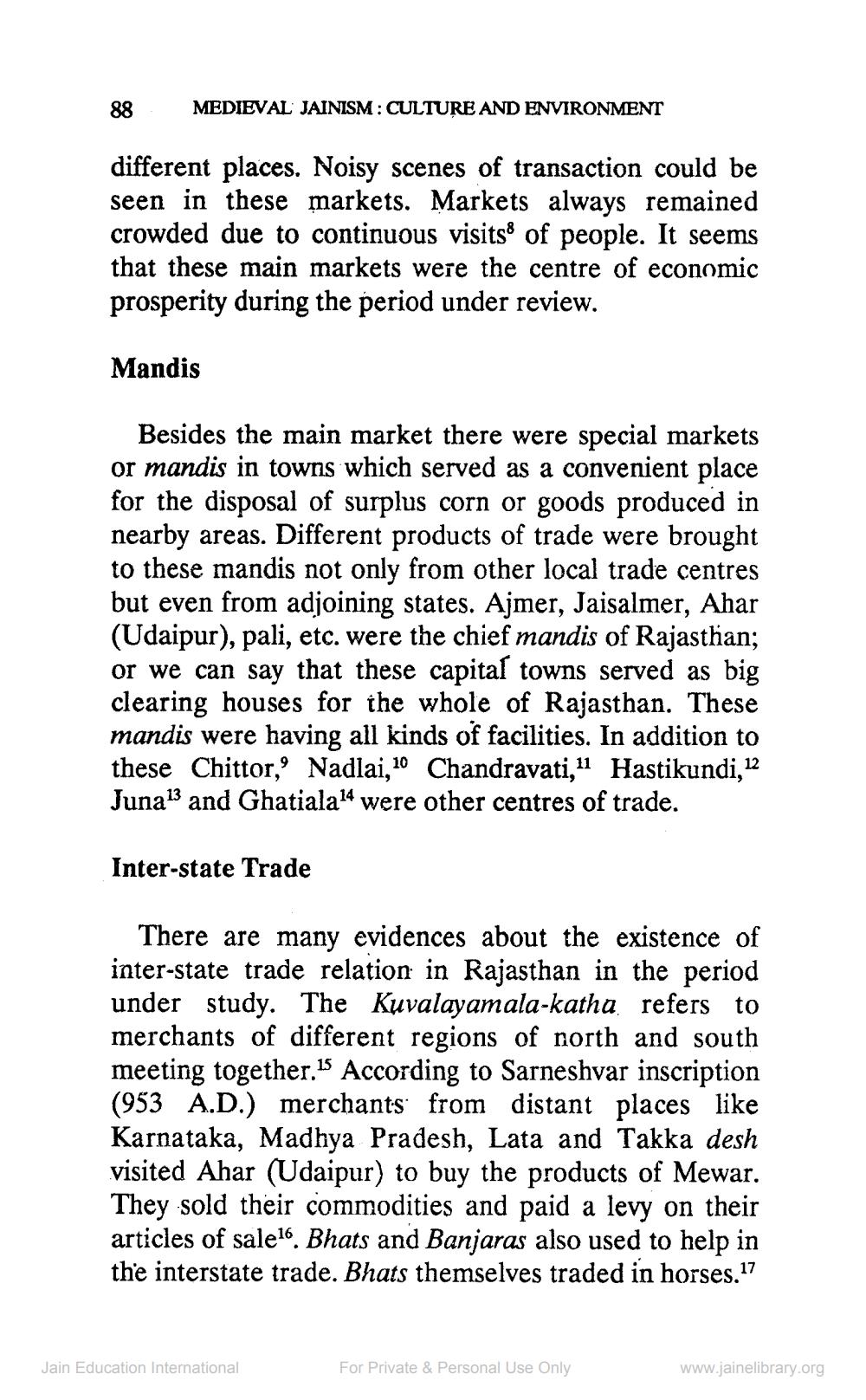________________
88
MEDIEVAL JAINISM : CULTURE AND ENVIRONMENT
different places. Noisy scenes of transaction could be seen in these markets. Markets always remained crowded due to continuous visits of people. It seems that these main markets were the centre of economic prosperity during the period under review.
Mandis
Besides the main market there were special markets or mandis in towns which served as a convenient place for the disposal of surplus corn or goods produced in nearby areas. Different products of trade were brought to these mandis not only from other local trade centres but even from adjoining states. Ajmer, Jaisalmer, Ahar (Udaipur), pali, etc. were the chief mandis of Rajasthan; or we can say that these capital towns served as big clearing houses for the whole of Rajasthan. These mandis were having all kinds of facilities. In addition to these Chittor, Nadlai, 10 Chandravati, 11 Hastikundi,12 Juna13 and Ghatiala14 were other centres of trade.
Inter-state Trade
There are many evidences about the existence of inter-state trade relation in Rajasthan in the period under study. The Kuvalayamala-katha refers to merchants of different regions of north and south meeting together.15 According to Sarneshvar inscription (953 A.D.) merchants from distant places like Karnataka, Madhya Pradesh, Lata and Takka desh visited Ahar (Udaipur) to buy the products of Mewar. They sold their commodities and paid a levy on their articles of sale16. Bhats and Banjaras also used to help in the interstate trade. Bhats themselves traded in horses.17
Jain Education International
For Private & Personal Use Only
www.jainelibrary.org




